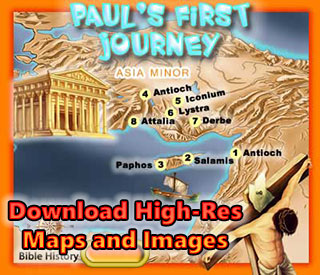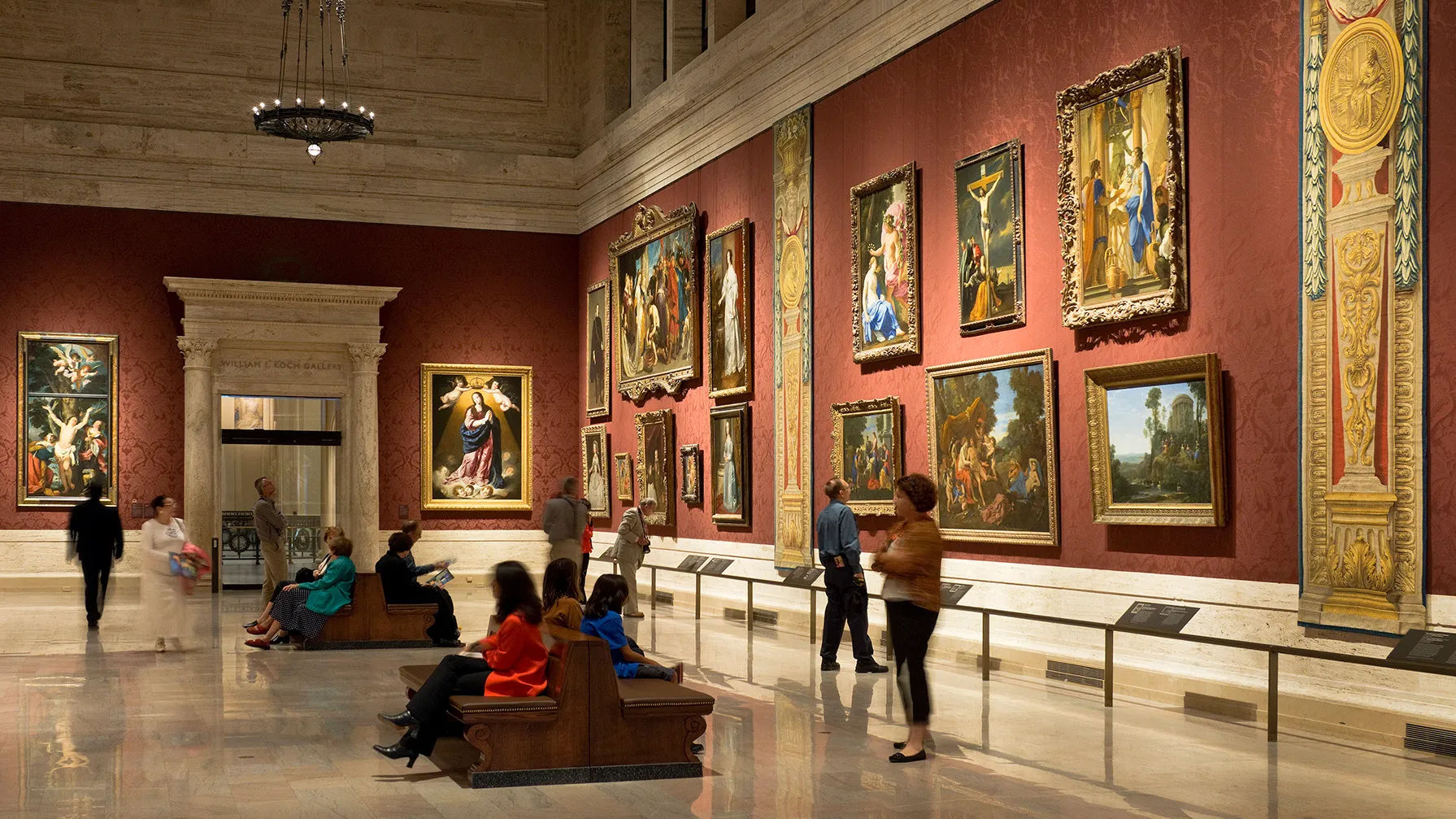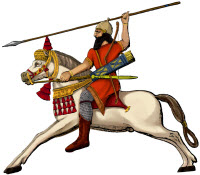|

|
|
|
|
Exploring Biblical Archaeology at the Museum of Fine Arts, Boston

The Museum of Fine Arts in Boston is a treasure trove of ancient artifacts that can enrich our understanding of biblical history. Many of its exhibits provide valuable connections to events, cultures, and peoples mentioned in Scripture. Below are a few suggested artifacts you can explore with your students, along with their biblical references and significance.
1. Striding Lion from the Babylonian Processional Way
- Description: The Striding Lion is a striking glazed brick relief from the Ishtar Gate in Babylon. This artifact exemplifies the grandeur of Nebuchadnezzar II’s Babylon.
- Biblical Reference: The city of Babylon is mentioned throughout the Bible as a symbol of power and rebellion against God. Daniel served in the court of Babylonian kings, including Nebuchadnezzar (Daniel 1-5). The lion imagery also resonates with Daniel’s experience in the lions’ den (Daniel 6).
- Teaching Point: Discuss Babylon's role in biblical prophecy and its influence during the exile of the Israelites.
2. Achaemenid Persian Artifacts
- Description: The museum hosts various items from the Achaemenid Empire, which ruled during the time of Ezra and Nehemiah.
- Biblical Reference: King Cyrus of Persia issued the decree allowing the Jews to return to Jerusalem and rebuild the Temple (Ezra 1:1-4). Artifacts like Persian reliefs and coins illustrate the wealth and influence of this empire.
- Teaching Point: Highlight how God used King Cyrus to fulfill His promise to the exiled Israelites, emphasizing God's sovereignty over nations.
3. Egyptian Artifacts, including Scarabs and Stelae
- Description: The MFA’s Egyptian collection includes scarabs, statues, and inscriptions that reflect life in ancient Egypt.
- Biblical Reference: Egypt is central to the story of the Exodus, where Moses led the Israelites out of slavery (Exodus 1-15). Scarabs, often inscribed with the names of pharaohs, could tie into discussions of the historical context of the Exodus.
- Teaching Point: Use these items to discuss the archaeological evidence for the culture and practices of ancient Egypt, connecting it to the Israelite experience.
4. Mesopotamian Cylinder Seals
- Description: These small, intricately carved cylinders were used to imprint designs on clay and often depict scenes of worship or daily life.
- Biblical Reference: Mesopotamia, where Abraham originated (Ur of the Chaldeans), plays a foundational role in the Bible (Genesis 11:27-31). These seals provide insight into the cultural and religious environment of the patriarchs.
- Teaching Point: Discuss Abraham’s journey of faith and how his obedience to God led to the founding of the Israelite nation.
5. Assyrian Reliefs
- Description: Reliefs from the Assyrian Empire show military campaigns and daily life. Though not part of the MFA's collection, you might find related objects from their archives or online exhibits.
- Biblical Reference: The Assyrians were key players in the Bible, notably conquering the northern kingdom of Israel in 722 BC (2 Kings 17:5-6). Reliefs often depict their military might and subjugation of peoples.
- Teaching Point: Explore the role of the Assyrians in biblical prophecy and history, highlighting their interactions with Israel.
6. Cuneiform Tablets
- Description: Cuneiform tablets on display often contain administrative records, laws, and correspondence.
- Biblical Reference: Cuneiform is the writing system of ancient Mesopotamia, where the Tower of Babel narrative originates (Genesis 11:1-9). It also provides a glimpse into the world of the patriarchs.
- Teaching Point: Use these tablets to discuss the development of early writing and its connection to biblical accounts.
7. Artifacts from the Roman Empire
- Description: The museum’s Roman collection includes coins, statues, and everyday items.
- Biblical Reference: The New Testament is set against the backdrop of the Roman Empire. Coins featuring Caesar, for example, recall Jesus’ teaching to “render unto Caesar what is Caesar’s” (Matthew 22:21).
- Teaching Point: Highlight the cultural and political landscape during Jesus’ ministry and the early church.
8. Phoenician Jewelry and Art
- Description: Items from Phoenicia include intricate jewelry and decorative pieces.
- Biblical Reference: The Phoenicians, known as master craftsmen, helped build Solomon’s Temple (1 Kings 5:6-18). Hiram, king of Tyre, supplied materials and skilled labor for the project.
- Teaching Point: Discuss the collaboration between Israel and neighboring nations during Solomon’s reign.
9. Greek Pottery and Artifacts
- Description: The MFA’s extensive Greek collection showcases pottery, sculptures, and inscriptions.
- Biblical Reference: While Greece is not prominent in the Old Testament, the intertestamental period (between Malachi and Matthew) saw Greek culture influence the Jewish world. This era set the stage for the New Testament.
- Teaching Point: Use these artifacts to discuss the cultural and linguistic impact of Hellenism on the early church.
10. Early Christian Art
- Description: The museum includes items from the early Christian period, such as crosses, inscriptions, and mosaics.
- Biblical Reference: These items reflect the spread of Christianity after the time of the apostles. They illustrate the fulfillment of Jesus’ command to spread the gospel to all nations (Matthew 28:19-20).
- Teaching Point: Discuss the growth of the early church and the enduring legacy of biblical faith.
Practical Tips for Your Visit
- Use scriptural references to connect each artifact to biblical accounts.
- Encourage students to reflect on how these objects bring biblical history to life.
- Suggest keeping a journal of their observations and thoughts during the visit.
Exploring these artifacts will not only enhance your students' understanding of biblical archaeology but also deepen their appreciation for the historical and cultural context of Scripture.
Tags: Biblical archaeology Museum of Fine Arts Boston Bible artifacts Striding Lion Babylon Egyptian relics and the Bible Ancient Israel history Ancient Israel Old Testament archaeology Old Testament New Testament artifacts New Testament Teaching Bible history Bible history
Kid's Bible Maps
Bible History Online
The Geography of the Bible
© Bible History Online (https://bible-history.com)
Made by Network Local

Kids Bible Maps
About
Us
Contact Us
To
Parents
To
Teachers
Kids Bible Blog
Using Our Maps
Mission
Statement
Doctrinal
Statement
Instructions
Popular Bible Maps
The Journey of Abraham
Moses and the Exodus
Joshua and the Land
The Kingdom of David
The Kingdom of Solomon
Israel in Jesus' Time
Paul's First Journey
The Land of Israel
The Land of Egypt
The Land of Assyria
The Land of Babylon
The Land of Persia
The Land of Greece
The City of Rome
Noah's Ark and Mt. Ararat
The Tower of Babel
The Old Testament World
The New Testament World
Ancient Empires
Moses and the 10 Plagues
Ancient Peoples
The 10 Commandments
The 12 Tribes of Israel
The Ministry of Jesus
Bible Stories with Maps
Daniel in the Lions Den
David and Goliath
Baby Moses
Jesus and the Little Children
Coloring Book Images
Coloring Book
Donkey
Camel
Lamb
Noah's Ark
Noah's 3 Sons
Abraham
Sheep
Lion